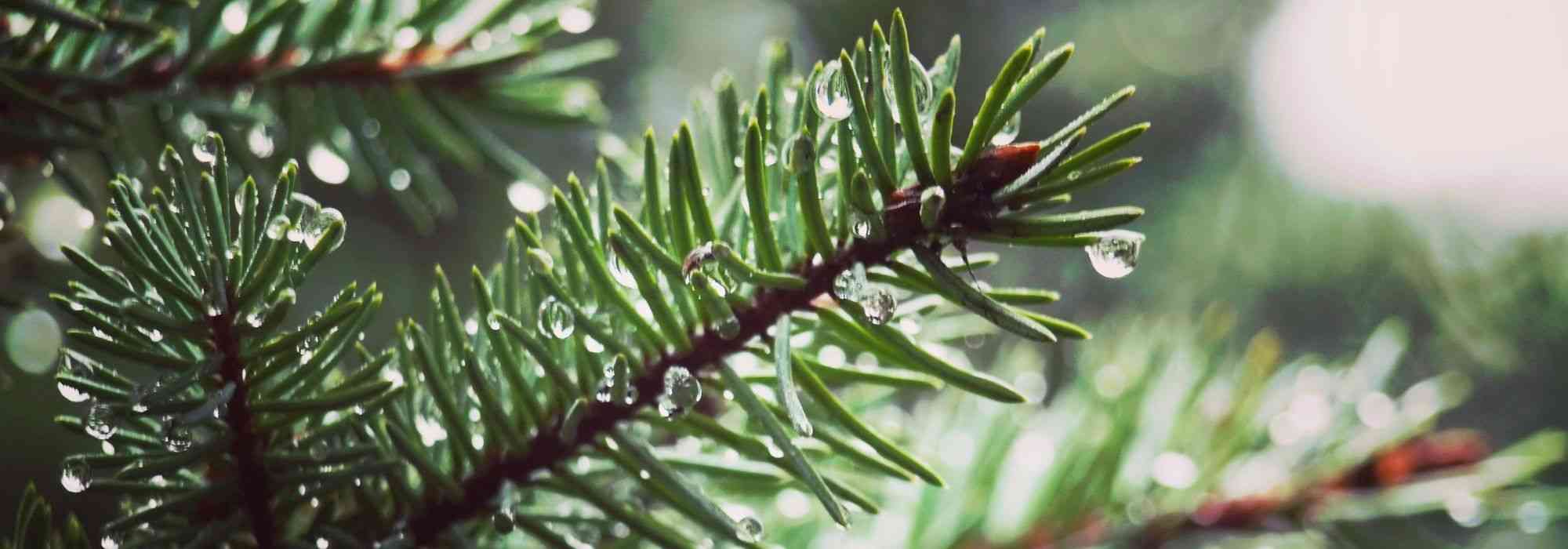
Major diseases and pests of conifers
Recognise symptoms and treat
Contents
Conifers are generally robust trees, hardy and adapted to withstand wind, cold and drought. However, mass planting of a single species in many gardens (or within a forest), the dry, polluted urban environment, compacted soil, a warming climate, heatwaves and even flooding all favour the emergence of various parasitic pests.
Let’s try to make things clearer so we can act appropriately! Often common-sense measures, such as pruning dead shoots, can stop disease; watering and adding compost to young trees can reduce their stress and strengthen them to encourage recovery.
Discoloured needles that eventually fall
Other symptoms associated : Needles become ternate or yellow or bear fine yellowish striate markings and may sometimes detach from twigs. You may also observe fine webs.
When : from early spring to late summer
Plants most affected : spruces and cypresses.
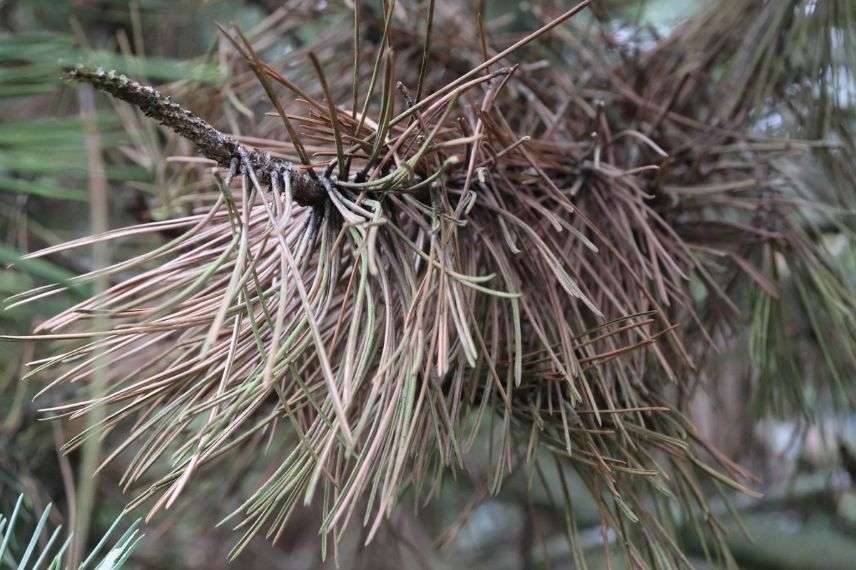
Causes : mites or yellow spider mites, no bigger than a pinhead!
They are favoured by warm, dry conditions.
How to react : Large trees are not treated. On small specimens, spray foliage to humidify the air in the evening or in the morning. You can complement this treatment with two sulphur sprays on the foliage at 8-day intervals.
Possible confusions : Aphids, but needles do not become sticky.
Sudden dieback of scattered twigs in summer, accompanied by swellings or cracks in the bark.
Other symptoms associated: Lift bark to reveal large flattened, sinuate galleries filled with sawdust. Ovate perforations on trunk indicate exit of adult beetle between May and August.
When: summer
Most affected plants: Thuja and Chamaecyparis, notably hedges, Juniper.
Causes: Conifer buprestid.
These small beetles of about 1 cm, with iridescent green and blue wings, fly during warm hours then settle on branch tips. Females lay eggs in bark fissures then die before winter, while white, plump larvae 15–20 mm long with broad heads feed on wood during winter before pupating (transforming into adults) at end of March–early April.
How to react: Cut and burn infected branches to avoid contaminating neighbouring trees. No need to treat! Replant with other species not susceptible.
Possible confusions: Scolytids and Thuja longhorn beetles that excavate galleries immediately under bark, mites, physiological decline, bark canker but absence of galleries.
Discover other Conifers
View all →Available in 1 sizes
Available in 1 sizes
Available in 1 sizes
Available in 1 sizes
Available in 1 sizes
Available in 1 sizes
Available in 1 sizes
Available in 2 sizes
Available in 1 sizes
Available in 1 sizes
Yellowing and premature needle drop, sticky, blackened twigs
Other associated symptoms: Observe closely twigs showing small, shiny brown or cottony shields on undersides of needle-bearing twigs. Honeydew from scale insects favours development of sooty mould.
When: all year round
Most affected plants: Yew, Chamaecyparis, Cypress, Juniper, Pine.
Causes : Scale insects.
How to react: Spray an insecticidal product in late spring on more vulnerable mobile larvae, such as fern manure, black soap or pyrethrin. Apply mineral oil in winter.
Possible confusions: Aphids.
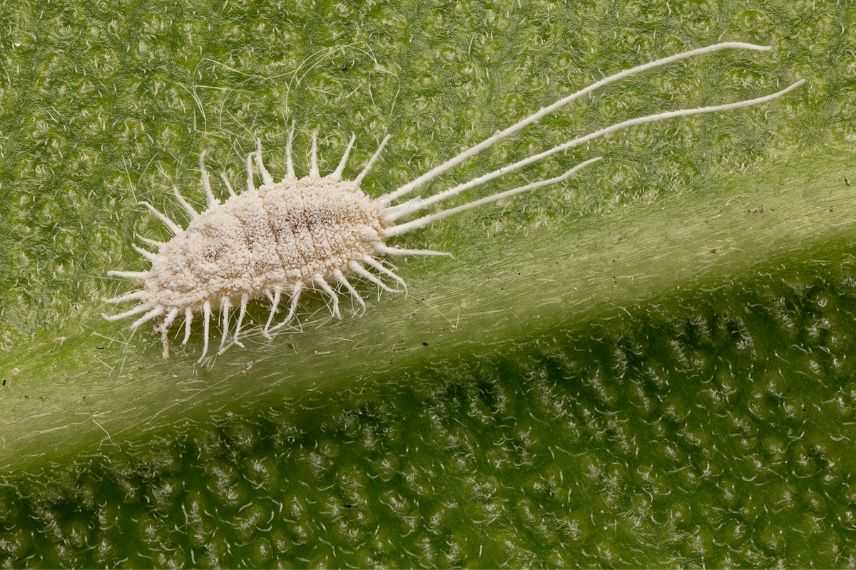
Read also
Getting rid of rust diseaseSlight yellowing of needles then sudden drying out
Other symptoms associated: Inspect shoots closely for colonies of inconspicuous brownish aphids. Needles are sticky and darkened because of honeydew, which favours a fungus, sooty mould.
When: early spring to early summer
Most affected plants: Chamaecyparis, cypress, thuja, juniper, cedar in rare cases.
Causes: conifer aphids.
How to respond: Quickly spray with an insecticidal treatment such as fern manure, black soap or pyrethrin.
Possible confusions: scale insects but absence of shields.
Browning of needles on shoots often situated at the base of branches.
Other symptoms associated: After drying out, the shoot becomes covered with blackish pustules.
When: spring–summer
Causes: cryptogamic browning.
Moulds favoured by damp weather.
Plants most affected: Chamaecyparis, cypress, Leyland cypress, Thuja, juniper.
How to react: Cut and burn affected shoots without delay. On small specimens, treat with horsetail decoction or copper. Strengthen the young plant with a magnesium-rich fertiliser.
Possible confusions: cortical canker but absence of canker on shoots.
Yellowing and drying of needles at base of branches, cracked bark, resin flow
Other associated symptoms: Bark becomes rough before cracking. Black pustules associated with droplets of resin appear. Cankers form, which can lead to drying out of large branches.
Most affected plants: Provence cypress and Leyland cypress
Causes: cortical canker.
How to respond: Cut and burn twigs immediately. Pull up the young plant if the trunk is affected. Choose varieties resistant to cortical canker such as Provence cypress ‘Mistral’ or ‘Santorey’.
Possible confusions: Fungal browning
Entire tree gradually drying out
Other symptoms associated: White, felt-like growth with a mushroom odour visible under the bark, which comes away easily at the base of the trunk.
When: year-round
Most affected plants: Chamaecyparis

Causes: Phytophthora, also known as conifer decline.
How to respond: Pull up and burn the young plant. Replace soil after digging a wide hole, or plant species that are not susceptible.
Strange pineapple-shaped galls on spruce
Other associated symptoms: whitish waxy or wooly swellings on shoots of firs, pines or larches, fluffy balls on Douglas fir sometimes leading to yellowing of foliage.
When: all year round
Causes: Chermes (type of aphid forming galls)
How to react: On large trees, do nothing! Remove galls manually on small specimens and apply mineral oil to trunk at end of winter.
Plants most affected: Spruce, Pine, Fir, Larch, Douglas fir.
- Subscribe!
- Contents


































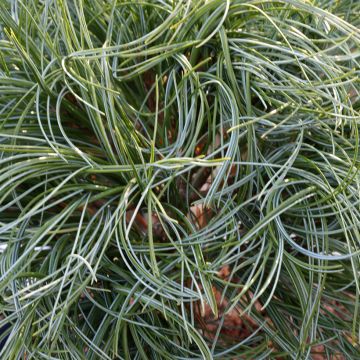
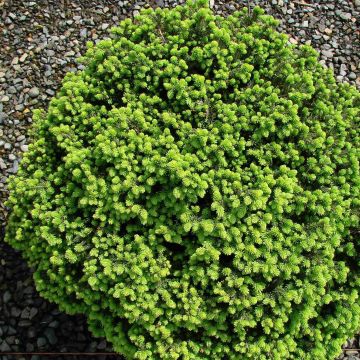
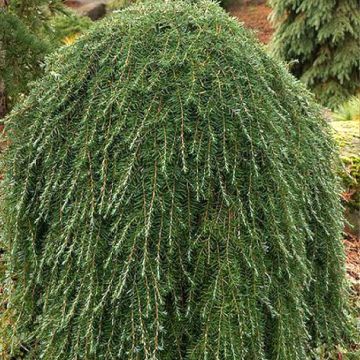
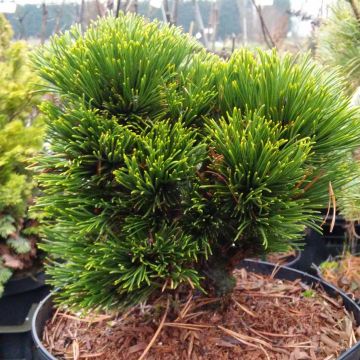
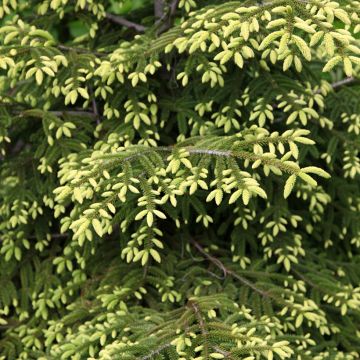

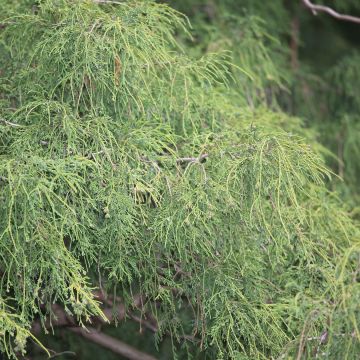

Comments